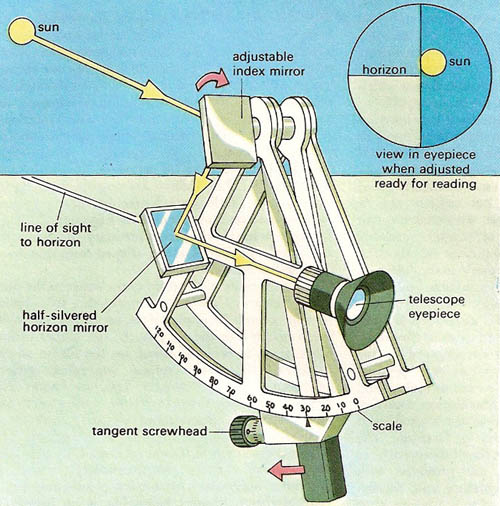sextant

A simple sextant as used for determining the altitude of the Sun or a star above the horizon. The horizon is viewed through the telescope while the image of the Sun viewed in the horizon and index mirrors is made to coincide with the horizon by rotating the index mirror. The altitude of the Sun can then be read off the scale. Practical instruments incorporate a variety of filters to protect the eyes of the user.
A sextant is an instrument used for navigation, which was invented in 1730 by John Hadley. It superceded the quadrant and the astrolabe.
A fixed telescope is pointed at the horizon, and a radial arm is moved against an arc graduated in degrees until a mirror which it bears reflects an image of a known star or the Sun down the telescope to coincide with the image of the horizon. The angular elevation of the star, with the exact time (see chronometer) gives the latitude. The air sextant is a similar instrument, usually periscope, designed for use in aircraft, and has an artificial horizon, generally a bubble level.
The name "sextant" comes from the fact that the scale usually covers 60°, or one-sixth of a circle.


